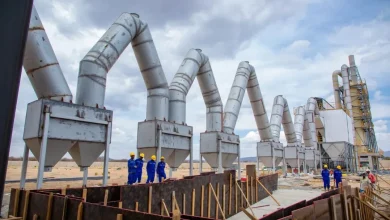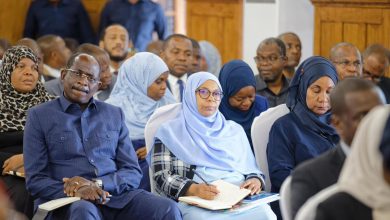Govt investments hit 92.3 tri/

DAR ES SALAAM: The government’s total domestic and foreign investments have continued to register steady growth, reaching 92.29 tri/- as of June 30, 2025 — a seven per cent increase from Sh86.3 trillion recorded in the 2023/24 financial year.
The government’s investment portfolio includes 255 Public and Statutory Corporations (PSCs), along with 45 minority-owned firms and 10 foreign institutions, which together form the backbone of Tanzania’s non-tax revenue base.
Five-year growth snapshot
Government domestic investments have steadily increased over the past five years, rising from 67.01tri/- in 2020/21 to 90.61tri/- in 2024/25, reflecting stronger performance and improved governance among StateOwned Enterprises.
Meanwhile, the value of foreign investments over the same period climbed from 722.94bn/- to 1.68tri/-, highlighting the government’s growing international investment footprint.
The latest figures, contained in the Treasury Registrar’s Statement for the year ended June 30, 2025, attribute the growth to improved performance among key PSCs and enhanced operational efficiency across several entities.
Treasury Registrar, Mr Nehemiah Mchechu, said the rise reflects the government’s continued efforts to strengthen the management and governance of public investments.
ALSO READ: Why Tanzania’s new Investment Dashboard is key to transforming public entities
“This steady increase in domestic investments reflects improved corporate governance and alignment with national development goals,” said Mr Mchechu.
Building on this positive trajectory, the OTR report shows that the performance of several large entities significantly influenced the overall growth in equity.
The National Social Security Fund (NSSF) recorded a 29 per cent increase in net assets, rising from 7.2tri/-to 9.3tri/-, mainly due to the addition of new members from the informal sector and integration with other government systems such as the Business Registration and Licensing Agency (BRELA) and Tanzania Revenue Authority (TRA).
Similarly, the Public Service Social Security Fund (PSSSF) posted a 13 per cent growth in net assets, moving from 8.12 tri/- to 9.2 tri/-, largely attributed to an increase in member contributions following the recruitment and promotion of civil servants.
The Bank of Tanzania (BoT) also reported a notable rise in net assets, up by 82 per cent — from 1.3 tri/- to 2.36 tri/-, reflecting robust financial performance and effective reserve management.
Mr Mchechu said the overall growth in government investment has also been supported by updated financial statements that reflect the most current shareholding and capital fund values.
“We have also seen an increase in revaluation reserves and accumulated surpluses across several corporations, alongside improved profitability among many State-Owned Enterprises,” he added.
He further noted that while the majority of entities performed well, a few — particularly those in the development stage, such as mining companies — recorded temporary declines in equity due to ongoing capital expenditure and limited revenue generation.
Only two State-Owned Enterprises, Air Tanzania Company Limited (ATCL) and Tanzania Railways Corporation (TRC), reported negative equity positions during the period under review.
Overall, the government’s investment portfolio remains dominated by noncommercial entities, which account for 72 per cent of total investments valued at 65.44tri/-, compared to 25.17tri/- (28 per cent) held in commercial entities.
Stronger returns and Non-Tax Revenue The strong performance of SOEs not only lifted the value of government investments but also boosted nontax revenue collections.
The OTR report highlights a notable rise in nontax revenue, which grew by 34 per cent — from 767bn/ in 2023/24 to1.03 tri/- in 2024/25 — equivalent to 92 per cent of the annual target.
The increase reflects improved profitability and stronger financial discipline among State-Owned Enterprises.
Most of the collections 92.01 per cent came from dividends and contributions, calculated as 15 per cent of gross revenue, while the remainder was generated from surplus remittances, loan repayments and the Telecommunications Traffic Monitoring System (TTMS).
A comparison of budgeted versus actual collections shows that the Office was able to collect more than 50 per cent of the target for contributions, dividends and loan repayments.
Meanwhile, surplus and other remittances, as well as TTMS collections, recorded 44 per cent and 37 per cent of their respective targets.
“The improved financial performance of public entities has translated into higher returns to the government, reinforcing our commitment to reducing dependency on tax revenues and promoting sustainable financing of development initiatives,” the Treasury Registrar emphasised.
Mr Mchechu reaffirmed the government’s commitment to ensuring sustainable growth of its investment portfolio through continued reforms, close monitoring and enhanced accountability of public enterprises.
“This growth underscores the progress we are making in ensuring that public investments deliver value to citizens,” he underscored.
He went on to add: “The OTR will continue to work closely with institutions to optimise performance, transparency, and the contribution of State-Owned Enterprises to the national economy.”
Vice-President Dr Philip Mpango, speaking during the opening of the CEOs Forum 2025 in Arusha on August 24, emphasised that reforms in public institutions are not optional but a responsibility, particularly given the government’s substantial investments in these entities.
“Strong governance of public institutions is a key government agenda to ensure that this massive investment delivers tangible returns for the nation,” he said.
Adding: “These institutions must provide highquality services, stimulate job creation and contribute significantly to national revenue.”
Foreign investments nearly double
The government’s investments in ten foreign institutions rose sharply, reaching 1.68 tri/-as of June 30, 2024 — an increase of 98 percent from 846.22 bn/- recorded in the previous year.
The financial updates for each institution are based on their respective financial years, reflecting the most current values.
The growth was primarily driven by exchange rate fluctuations, accrued reserves, and operational gains in key institutions.
While the government’s shareholding remained largely unchanged across the ten entities, exceptions include the African Development Bank (AfDB), where shares increased from 123,705 to 124,094, and the Eastern and Southern African Trade and Development Bank (PTA Bank), which rose from 10,410 to 10,418 shares.
This upward trend underscores the government’s strategic approach to diversifying its investment portfolio internationally while maintaining steady stakes in key regional and global financial institutions.





